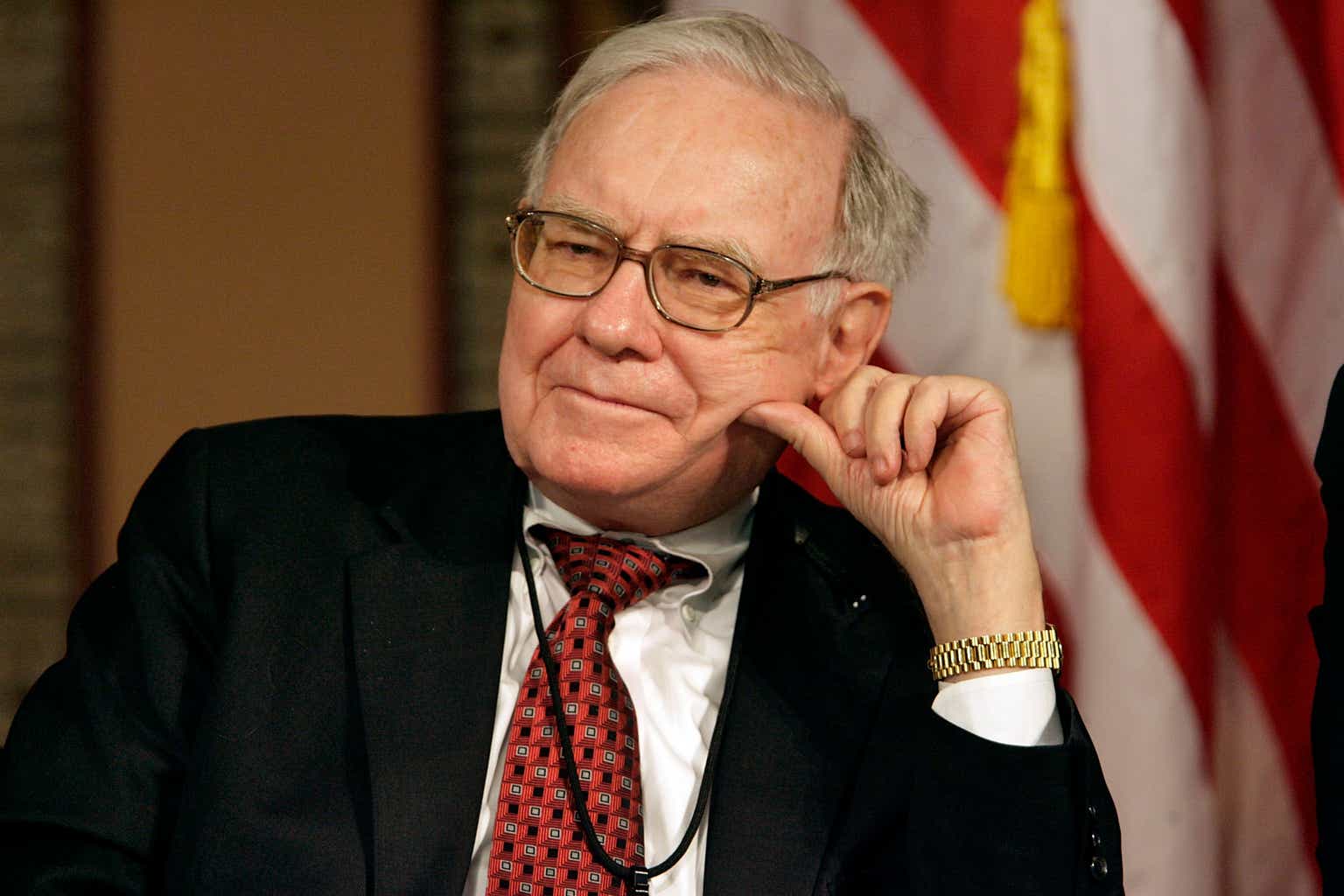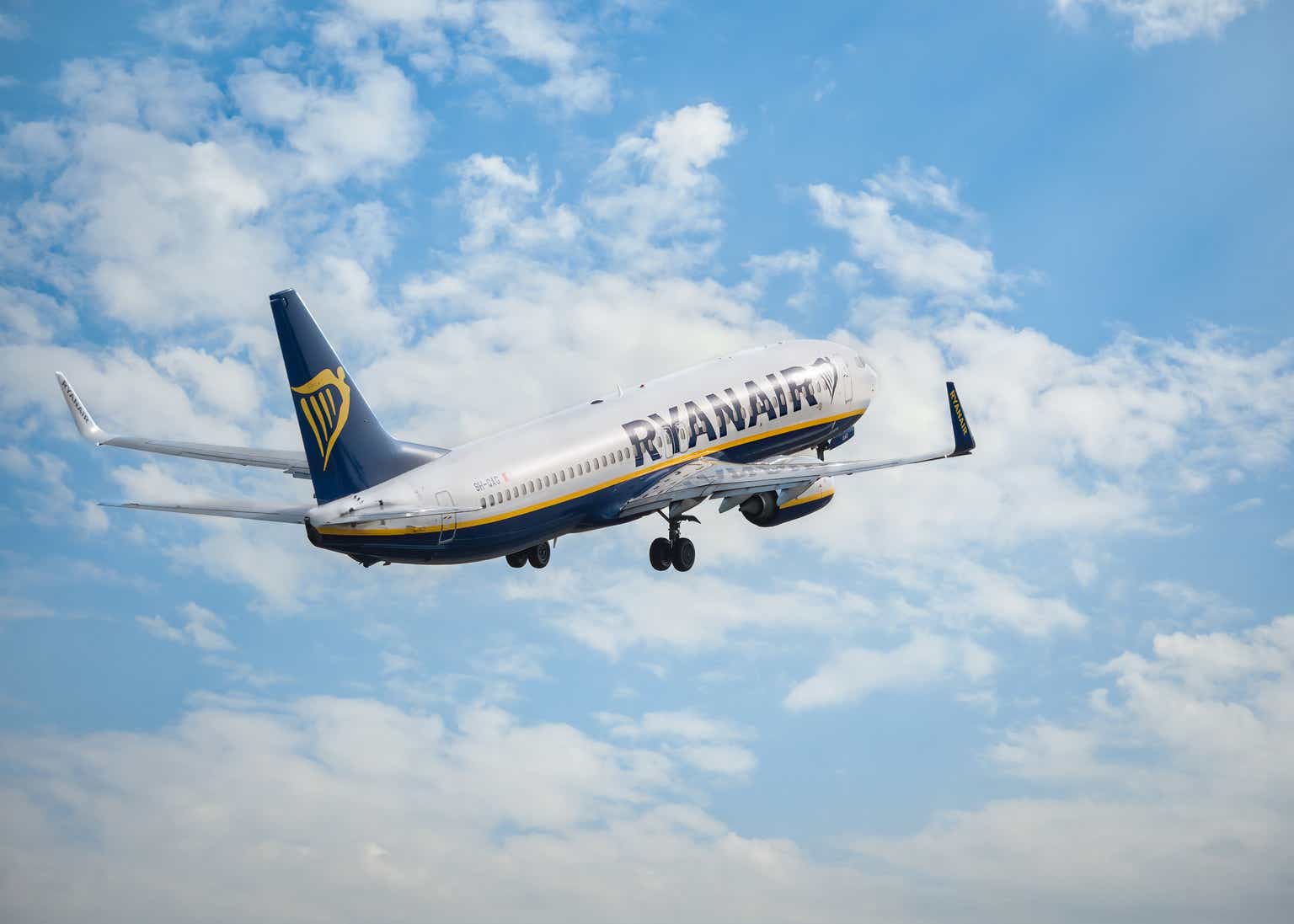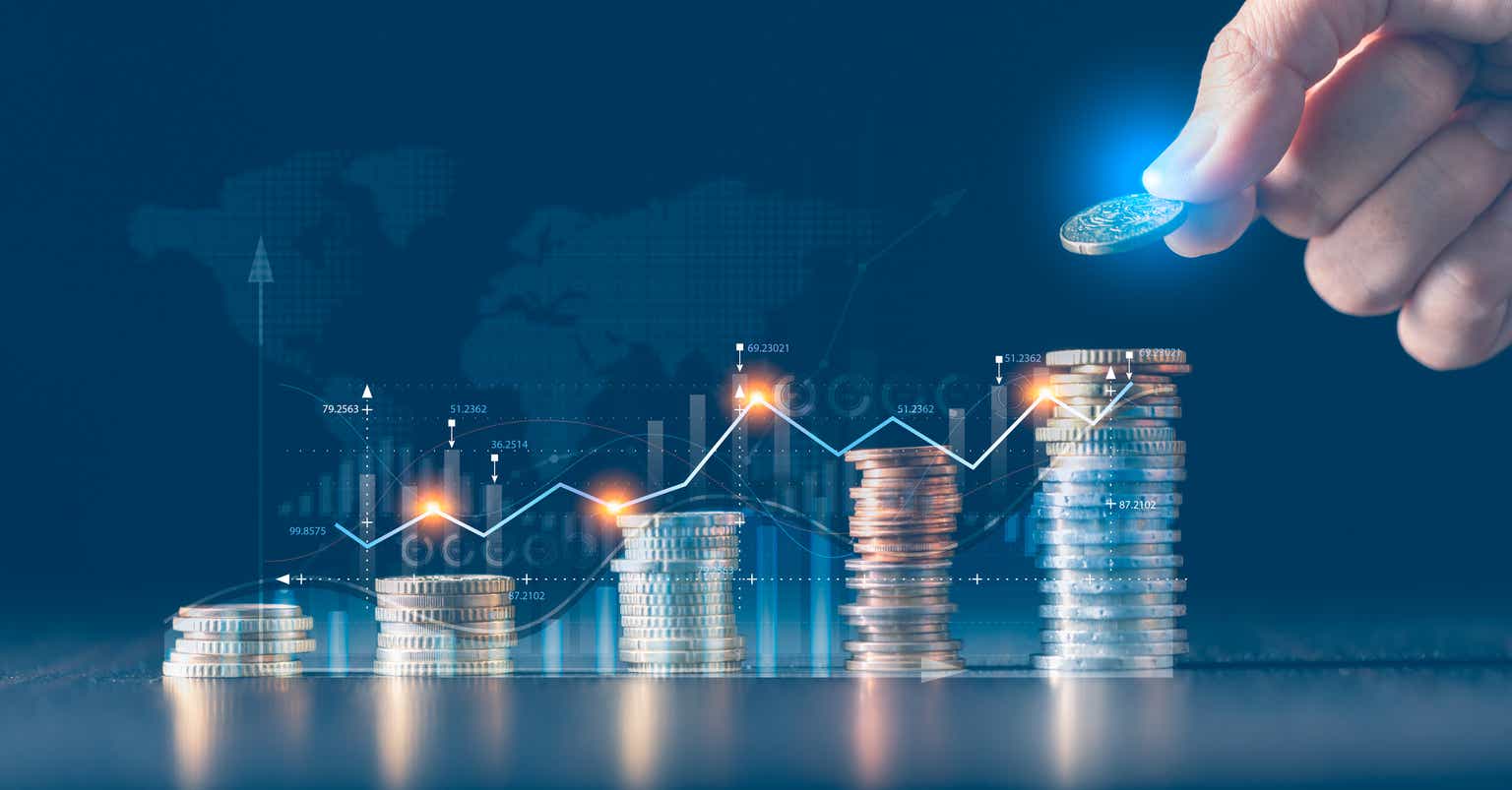To the Shareholders of Berkshire Hathaway Inc.:
This letter comes to you as part of Berkshire’s (NYSE:BRK.A, NYSE:BRK.B) annual report. As a public company, we are required to periodically tell you many specific facts and figures.
“Report,” however, implies a greater responsibility. In addition to the mandated data, we believe we owe you additional commentary about what you own and how we think. Our goal is to communicate with you in a manner that we would wish you to use if our positions were reversed – that is, if you were Berkshire’s CEO while I and my family were passive investors, trusting you with our savings.
This approach leads us to an annual recitation of both good and bad developments at the many businesses you indirectly own through your Berkshire shares. When discussing problems at specific subsidiaries, we do, however, try to follow the advice Tom Murphy gave to me 60 years ago: “praise by name, criticize by category.”
Mistakes – Yes, We Make Them at Berkshire
Sometimes I’ve made mistakes in assessing the future economics of a business I’ve purchased for Berkshire – each a case of capital allocation gone wrong. That happens with both judgments about marketable equities – we view these as partial ownership of businesses – and the 100% acquisitions of companies.
At other times, I’ve made mistakes when assessing the abilities or fidelity of the managers Berkshire is hiring. The fidelity disappointments can hurt beyond their financial impact, a pain that can approach that of a failed marriage.
A decent batting average in personnel decisions is all that can be hoped for. The cardinal sin is delaying the correction of mistakes or what Charlie Munger called “thumb-sucking.” Problems, he would tell me, cannot be wished away. They require action, however uncomfortable that may be.
During the 2019-23 period, I have used the words “mistake” or “error” 16 times in my letters to you. Many other huge companies have never used either word over that span. Amazon (AMZN), I should acknowledge, made some brutally candid observations in its 2021 letter. Elsewhere, it has generally been happy talk and pictures.
I have also been a director of large public companies at which “mistake” or “wrong” were forbidden words at board meetings or analyst calls. That taboo, implying managerial perfection, always made me nervous (though, at times, there could be legal issues that make limited discussion advisable. We live in a very litigious society.)
At 94, it won’t be long before Greg Abel replaces me as CEO and will be writing the annual letters. Greg shares the Berkshire creed that a “report” is what a Berkshire CEO annually owes to owners. And he also understands that if you start fooling your shareholders, you will soon believe your own baloney and be fooling yourself as well.
Pete Liegl – One of a Kind
Let me pause to tell you the remarkable story of Pete Liegl, a man unknown to most Berkshire shareholders but one who contributed many billions to their aggregate wealth. Pete died in November, still working at 80.
I first heard of Forest River – the Indiana company Pete founded and managed – on June 21, 2005. On that day I received a letter from an intermediary detailing relevant data about the company, a recreational vehicle (“RV”) manufacturer. The writer said that Pete, the 100% owner of Forest River, specifically wanted to sell to Berkshire. He also told me the price that Pete expected to receive. I liked this no-nonsense approach.
I did some checking with RV dealers, liked what I learned and arranged a June 28th meeting in Omaha. Pete brought along his wife, Sharon, and daughter, Lisa. When we met, Pete assured me that he wanted to keep running the business but would feel more comfortable if he could assure financial security for his family.
Pete next mentioned that he owned some real estate that was leased to Forest River and had not been covered in the June 21 letter. Within a few minutes, we arrived at a price for those assets as I expressed no need for appraisal by Berkshire but would simply accept his valuation.
Then we arrived at the other point that needed clarity. I asked Pete what his compensation should be, adding that whatever he said, I would accept. (This, I should add, is not an approach I recommend for general use.)
Pete paused as his wife, daughter and I leaned forward. Then he surprised us: “Well, I looked at Berkshire’s proxy statement and I wouldn’t want to make more than my boss, so pay me $100,000 per year.” After I picked myself off the floor, Pete added: “But we will earn X (he named a number) this year, and I would like an annual bonus of 10% of any earnings above what the company is now delivering.” I replied: “OK Pete, but if Forest River makes any significant acquisitions we will make an appropriate adjustment for the additional capital thus employed.” I didn’t define “appropriate” or “significant,” but those vague terms never caused a problem.
The four of us then went to dinner at Omaha’s Happy Hollow Club and lived happily ever after. During the next 19 years, Pete shot the lights out. No competitor came close to his performance.
Every company doesn’t have an easy-to-understand business and there are very few owners or managers like Pete. And, of course, I expect to make my share of mistakes about the businesses Berkshire buys and sometimes err in evaluating the sort of person with whom I’m dealing.
But I’ve also had many pleasant surprises in both the potential of the business as well as the ability and fidelity of the manager. And our experience is that a single winning decision can make a breathtaking difference over time. (Think GEICO as a business decision, Ajit Jain as a managerial decision and my luck in finding Charlie Munger as a one-of-a-kind partner, personal advisor and steadfast friend.) Mistakes fade away; winners can forever blossom.
One further point in our CEO selections: I never look at where a candidate has gone to school. Never!
Of course, there are great managers who attended the most famous schools. But there are plenty such as Pete who may have benefitted by attending a less prestigious institution or even by not bothering to finish school. Look at my friend, Bill Gates, who decided that it was far more important to get underway in an exploding industry that would change the world than it was to stick around for a parchment that he could hang on the wall. (Read his new book, Source Code.)
Not long ago, I met – by phone – Jessica Toonkel, whose step-grandfather, Ben Rosner, long ago ran a business for Charlie and me. Ben was a retailing genius and, in preparing for this report, I checked with Jessica to confirm Ben’s schooling, which I remembered as limited.
Jessica’s reply: “Ben never went past 6 th grade.”
I was lucky enough to get an education at three fine universities. And I avidly believe in lifelong learning. I’ve observed, however, that a very large portion of business talent is innate with nature swamping nurture.
Pete Liegl was a natural.
Last Year’s Performance
In 2024, Berkshire did better than I expected though 53% of our 189 operating businesses reported a decline in earnings. We were aided by a predictable large gain in investment income as Treasury Bill yields improved and we substantially increased our holdings of these highly-liquid short-term securities.
Our insurance business also delivered a major increase in earnings, led by the performance of GEICO. In five years, Todd Combs has reshaped GEICO in a major way, increasing efficiency and bringing underwriting practices up to date. GEICO was a long-held gem that needed major repolishing, and Todd has worked tirelessly in getting the job done.
Though not yet complete, the 2024 improvement was spectacular.
In general, property-casualty (“P/C”) insurance pricing strengthened during 2024, reflecting a major increase in damage from convective storms. Climate change may have been announcing its arrival. However, no “monster” event occurred during 2024. Someday, any day, a truly staggering insurance loss will occur – and there is no guarantee that there will be only one per annum.
The P/C business is so central to Berkshire that it warrants a further discussion that appears later in this letter.
Berkshire’s railroad and utility operations, our two largest businesses outside of insurance, improved their aggregate earnings. Both, however, have much left to accomplish.
Late in the year we increased our ownership of the utility operation from about 92% to 100% at a cost of roughly $3.9 billion, of which $2.9 billion was paid in cash with a balance in Berkshire “B” shares.
All told, we recorded operating earnings of $47.4 billion in 2024. We regularly – endlessly, some readers may groan – emphasize this measure rather than the GAAP-mandated earnings that are reported on page K-68.
Our measure excludes capital gains or losses on the stocks and bonds we own, whether realized or unrealized. Over time, we think it highly likely that gains will prevail – why else would we buy these securities? – though the year-by-year numbers will swing wildly and unpredictably. Our horizon for such commitments is almost always far longer than a single year. In many, our thinking involves decades. These long-termers are the purchases that sometimes make the cash register ring like church bells.
Here’s a breakdown of the 2023-24 earnings as we see them. All calculations are after depreciation, amortization and income tax. EBITDA, a flawed favorite of Wall Street, is not for us.
|
(in $ millions) |
|||
|
2024 |
2023 |
||
|
Insurance-underwriting . . . . . . . . . . . . . . . . . . . . . |
$ 9,020 |
$ 5,428 |
|
|
Insurance-investment income . . . . . . . . . . . . . . . . |
13,670 |
9,567 |
|
|
BNSF . . . . . . . . . . . . . . . . . . . . . . . . . . . . . . . . . . . |
5,031 |
5,087 |
|
|
Berkshire Hathaway Energy . . . . . . . . . . . . . . . . . |
3,730 |
2,331 |
|
|
Other controlled businesses . . . . . . . . . . . . . . . . . |
13,072 |
13,362 |
|
|
Non-controlled businesses* . . . . . . . . . . . . . . . . . |
1,519 |
1,750 |
|
|
Other** . . . . . . . . . . . . . . . . . . . . . . . . . . . . . . . . . |
1,395 |
(175) |
|
|
Operating earnings . . . . . . . . . . . . . . . . . . . . . . . . |
$47,437 |
$37,350 |
|
*Includes certain businesses in which Berkshire had between a 20% and 50% ownership such as Kraft Heinz, Occidental Petroleum and Berkadia. ** Includes foreign currency exchange gains of approximately $1.1 billion in 2024 and approximately $211 million in 2023 produced by our usage of non-U.S. dollar-denominated debt. |
Surprise, Surprise! An Important American Record is Smashed
Sixty years ago, present management took control of Berkshire. That move was a mistake – my mistake – and one that plagued us for two decades. Charlie, I should emphasize, spotted my obvious error immediately: Though the price I paid for Berkshire looked cheap, its business – a large northern textile operation – was headed for extinction.
The U.S. Treasury, of all places, had already received silent warnings of Berkshire’s destiny. In 1965, the company did not pay a dime of income tax, an embarrassment that had generally prevailed at the company for a decade. That sort of economic behavior may be understandable for glamorous startups, but it’s a blinking yellow light when it happens at a venerable pillar of American industry. Berkshire was headed for the ash can.
Fast forward 60 years and imagine the surprise at the Treasury when that same company – still operating under the name of Berkshire Hathaway – paid far more in corporate income tax than the U.S. government had ever received from any company – even the American tech titans that commanded market values in the trillions.
To be precise, Berkshire last year made four payments to the IRS that totaled $26.8 billion. That’s about 5% of what all of corporate America paid. (In addition, we paid sizable amounts for income taxes to foreign governments and to 44 states.)
Note one crucial factor allowing this record-shattering payment: Berkshire shareholders during the same 1965-2024 period received only one cash dividend. On January 3, 1967, we disbursed our sole payment – $101,755 or 10¢ per A share. (I can’t remember why I suggested this action to Berkshire’s board of directors. Now it seems like a bad dream.)
For sixty years, Berkshire shareholders endorsed continuous reinvestment and that enabled the company to build its taxable income. Cash income-tax payments to the U.S. Treasury, miniscule in the first decade, now aggregate more than $101 billion. . . and counting.
Huge numbers can be hard to visualize. Let me recast the $26.8 billion that we paid last year.
If Berkshire had sent the Treasury a $1 million check every 20 minutes throughout all of 2024 – visualize 366 days and nights because 2024 was a leap year – we still would have owed the federal government a significant sum at yearend. Indeed, it would be well into January before the Treasury would tell us that we could take a short breather, get some sleep, and prepare for our 2025 tax payments.
Where Your Money Is
Berkshire’s equity activity is ambidextrous. In one hand we own control of many businesses, holding at least 80% of the investee’s shares. Generally, we own 100%.
These 189 subsidiaries have similarities to marketable common stocks but are far from identical. The collection is worth many hundreds of billions and includes a few rare gems, many good-but-far-from-fabulous businesses and some laggards that have been disappointments. We own nothing that is a major drag, but we have a number that I should not have purchased.
In the other hand, we own a small percentage of a dozen or so very large and highly profitable businesses with household names such as Apple, American Express, Coca-Cola and Moody’s. Many of these companies earn very high returns on the net tangible equity required for their operations. At yearend, our partial-ownership holdings were valued at $272 billion.
Understandably, really outstanding businesses are very seldom offered in their entirety, but small fractions of these gems can be purchased Monday through Friday on Wall Street and, very occasionally, they sell at bargain prices.
We are impartial in our choice of equity vehicles, investing in either variety based upon where we can best deploy your (and my family’s) savings. Often, nothing looks compelling; very infrequently we find ourselves knee-deep in opportunities. Greg has vividly shown his ability to act at such times as did Charlie.
With marketable equities, it is easier to change course when I make a mistake.
Berkshire’s present size, it should be underscored, diminishe s this valuable option. We can’t come and go on a dime. Sometimes a year or more is required to establish or divest an investment. Additionally, with ownership of minority positions we can’t change management if that action is needed or control what is done with capital flows if we are unhappy with the decisions being made.
With controlled companies, we can dictate these decisions, but we have far less flexibility in the disposition of mistakes. In reality, Berkshire almost never sells controlled businesses unless we face what we believe to be unending problems. An offset is that some business owners seek out Berkshire because of our steadfast behavior. Occasionally, that can be a decided plus for us.
Despite what some commentators currently view as an extraordinary cash position at Berkshire, the great majority of your money remains in equities. That preference won’t change. While our ownership in marketable equities moved downward last year from $354 billion to $272 billion, the value of our non-quoted controlled equities increased somewhat and remains far greater than the value of the marketable portfolio.
Berkshire shareholders can rest assured that we will forever deploy a substantial majority of their money in equities – mostly American equities although many of these will have international operations of significance. Berkshire will never prefer ownership of cash-equivalent assets over the ownership of good businesses, whether controlled or only partially owned.
Paper money can see its value evaporate if fiscal folly prevails. In some countries, this reckless practice has become habitual, and, in our country’s short history, the U.S. has come close to the edge. Fixed-coupon bonds provide no protection against runaway currency.
Businesses, as well as individuals with desired talents, however, will usually find a way to cope with monetary instability as long as their goods or services are desired by the country’s citizenry. So, too, with personal skills. Lacking such assets as athletic excellence, a wonderful voice, medical or legal skills or, for that matter, any special talents, I have had to rely on equities throughout my life. In effect, I have depended on the success of American businesses and I will continue to do so.
One way or another, the sensible – better yet imaginative – deployment of savings by citizens is required to propel an ever-growing societal output of desired goods and services. This system is called capitalism. It has its faults and abuses – in certain respects more egregious now than ever – but it also can work wonders unmatched by other economic systems.
America is Exhibit A. Our country’s progress over its mere 235 years of existence could not have been imagined by even the most optimistic colonists in 1789, when the Constitution was adopted and the country’s energies were unleashed.
True, our country in its infancy sometimes borrowed abroad to supplement our own savings. But, concurrently, we needed many Americans to consistently save and then needed those savers or other Americans to wisely deploy the capital thus made available. If America had consumed all that it produced, the country would have been spinning its wheels.
The American process has not always been pretty – our country has forever had many scoundrels and promoters who seek to take advantage of those who mistakenly trust them with their savings. But even with such malfeasance – which remains in full force today – and also much deployment of capital that eventually floundered because of brutal competition or disruptive innovation, the savings of Americans has delivered a quantity and quality of output beyond the dreams of any colonist.
From a base of only four million people – and despite a brutal internal war early on, pitting one American against another – America changed the world in the blink of a celestial eye.
In a very minor way, Berkshire shareholders have participated in the American miracle by foregoing dividends, thereby electing to reinvest rather than consume. Originally, this reinvestment was tiny, almost meaningless, but over time, it mushroomed, reflecting the mixture of a sustained culture of savings, combined with the magic of long-term compounding.
Berkshire’s activities now impact all corners of our country. And we are not finished.
Companies die for many reasons but, unlike the fate of humans, old age itself is not lethal. Berkshire today is far more youthful than it was in 1965.
However, as Charlie and I have always acknowledged, Berkshire would not have achieved its results in any locale except America whereas America would have been every bit the success it has been if Berkshire had never existed.
So thank you, Uncle Sam. Someday your nieces and nephews at Berkshire hope to send you even larger payments than we did in 2024. Spend it wisely. Take care of the many who, for no fault of their own, get the short straws in life. They deserve better. And never forget that we need you to maintain a stable currency and that result requires both wisdom and vigilance on your part.
Property-Casualty Insurance
P/C insurance continues to be Berkshire’s core business. The industry follows a financial model that is rare – very rare – among giant businesses.
Customarily, companies incur costs for labor, materials, inventories, plant and equipment, etc. before– or concurrently with – the sale of their products or services. Consequently, their CEOs have a good fix on knowing the cost of their product before they sell it. If the selling price is less than its cost, managers soon learn they have a problem. Hemorrhaging cash is hard to ignore.
When writing P/C insurance, we receive payment upfront and much later learn what our product has cost us – sometimes a moment of truth that is delayed as much as 30 or more years. (We are still making substantial payments on asbestos exposures that occurred 50 or more years ago.)
This mode of operations has the desirable effect of giving P/C insurers cash before they incur most expenses but carries with it the risk that the company can be losing money – sometimes mountains of money – before the CEO and directors realize what is happening.
Certain lines of insurance minimize this mismatch, such as crop insurance or hail damage in which losses are quickly reported, evaluated and paid. Other lines, however, can lead to executive and shareholder bliss as the company is going broke. Think coverages such as medical malpractice or product liability. In “long-tail” lines, a P/C insurer may report large but fictitious profits to its owners and regulators for many years – even decades. The accounting can be particularly dangerous if the CEO is an optimist or a crook. These possibilities are not fanciful: History reveals a large number of each species.
In recent decades, this “money-up-front, loss-payments-later” model has allowed Berkshire to invest large sums (“float”) while generally delivering what we believe to be a small underwriting profit. We make estimates for “surprises” and, so far, these estimates have been sufficient.
We are not deterred by the dramatic and growing loss payments sustained by our activities. (As I write this, think wildfires.) It’s our job to price to absorb these and unemotionally take our lumps when surprises develop. It’s also our job to contest “runaway” verdicts, spurious litigation and outright fraudulent behavior.
Under Ajit, our insurance operation has blossomed from an obscure Omaha-based company into a world leader, renowned for both its taste for risk and its Gibraltar-like financial strength. Moreover, Greg, our directors and I all have a very large investment in Berkshire in relation to any compensation we receive. We do not use options or other one-sided forms of compensation; if you lose money, so do we. This approach encourages caution but does not ensure foresight.
P/C insurance growth is dependent on increased economic risk. No risk – no need for insurance.
Think back only 135 years when the world had no autos, trucks or airplanes. Now there are 300 million vehicles in the U.S. alone, a massive fleet causing huge damage daily. Property damage arising from hurricanes, tornadoes and wildfires is massive, growing and increasingly unpredictable in their patterns and eventual costs.
It would be foolish – make that madness – to write ten-year policies for these coverages, but we believe one-year assumption of such risks is generally manageable. If we change our minds, we will change the contracts we offer. During my lifetime, auto insurers have generally abandoned one-year policies and switched to the six-month variety. This change reduced float but allowed more intelligent underwriting.
No private insurer has the willingness to take on the amount of risk that Berkshire can provide. At times, this advantage can be important. But we also need to shrink when prices are inadequate. We must never write inadequately-priced policies in order to stay in the game. That policy is corporate suicide.
Properly pricing P/C insurance is part art, part science and is definitely not a business for optimists. Mike Goldberg, the Berkshire executive who recruited Ajit, said it best: “We want our underwriters to daily come to work nervous, but not paralyzed.”
All things considered, we like the P/C insurance business. Berkshire can financially and psychologically handle extreme losses without blinking. We are also not dependent on reinsurers and that gives us a material and enduring cost advantage. Finally, we have outstanding managers ( no optimists) and are particularly well-situated to utilize the substantial sums P/C insurance delivers for investment.
Over the past two decades, our insurance business has generated $32 billion of after-tax profits from underwriting, about 3.3 cents per dollar of sales after income tax. Meanwhile, our float has grown from $46 billion to $171 billion. The float is likely to grow a bit over time and, with intelligent underwriting (and some luck), has a reasonable prospect of being costless.
Berkshire Increases its Japanese Investments
A small but important exception to our U.S.-based focus is our growing investment in Japan.
It’s been almost six years since Berkshire began purchasing shares in five Japanese companies that very successfully operate in a manner somewhat similar to Berkshire itself. The five are (alphabetically) ITOCHU (OTCPK:ITOCF), Marubeni (OTCPK:MARUY), Mitsubishi (MUFG), Mitsui (OTCPK:MITSY) and Sumitomo (SMFG). Each of these large enterprises, in turn, owns interests in a vast array of businesses, many based in Japan but others that operate throughout the world.
Berkshire made its first purchases involving the five in July 2019. We simply looked at their financial records and were amazed at the low prices of their stocks. As the years have passed, our admiration for these companies has consistently grown. Greg has met many times with them, and I regularly follow their progress. Both of us like their capital deployment, their managements and their attitude in respect to their investors.
Each of the five companies increase dividends when appropriate, they repurchase their shares when it is sensible to do so, and their top managers are far less aggressive in their compensation programs than their U.S. counterparts.
Our holdings of the five are for the very long term, and we are committed to supporting their boards of directors. From the start, we also agreed to keep Berkshire’s holdings below 10% of each company’s shares. But, as we approached this limit, the five companies agreed to moderately relax the ceiling. Over time, you will likely see Berkshire’s ownership of all five increase somewhat.
At yearend, Berkshire’s aggregate cost (in dollars) was $13.8 billion and the market value of our holdings totaled $23.5 billion.
Meanwhile, Berkshire has consistently – but not pursuant to any formula – increased its yen-denominated borrowings. All are at fixed rates, no “floaters.” Greg and I have no view on future foreign exchange rates and therefore seek a position approximating currency-neutrality. We are required, however, under GAAP rules to regularly recognize in our earnings a calculation of any gains or losses in the yen we have borrowed and, at yearend, had included $2.3 billion of after-tax gains due to dollar strength of which $850 million occurred in 2024.
I expect that Greg and his eventual successors will be holding this Japanese position for many decades and that Berkshire will find other ways to work productively with the five companies in the future.
We like the current math of our yen-balanced strategy as well. As I write this, the annual dividend income expected from the Japanese investments in 2025 will total about $812 million and the interest cost of our yen-denominated debt will be about $135 million.
The Annual Gathering in Omaha
I hope you will join us in Omaha on May 3rd. We are following a somewhat changed schedule this year, but the basics remain the same. Our goal is that you get many of your questions answered, that you connect with friends, and that you leave with a good impression of Omaha. The city looks forward to your visits.
We will have much the same group of volunteers to offer you a wide variety of Berkshire products that will lighten your wallet and brighten your day. As usual, we will be open on Friday from noon until 5 p.m. with lovable Squishmallows, underwear from Fruit of the Loom, Brooks running shoes and a host of other items to tempt you.
Again, we will have only one book for sale. Last year we featured Poor Charlie’s Almanack and sold out – 5,000 copies disappeared before the close of business on Saturday.
This year we will offer 60 Years of Berkshire Hathaway. In 2015, I asked Carrie Sova, who among her many duties managed much of the activity at the annual meeting, to try her hand at putting together a light-hearted history of Berkshire. I gave her full reign to use her imagination, and she quickly produced a book that blew me away with its ingenuity, contents and design.
Subsequently, Carrie left Berkshire to raise a family and now has three children. But each summer, the Berkshire office force gets together to watch the Omaha Storm Chasers play baseball against a Triple A opponent. I ask a few alums to join us, and Carrie usually comes with her family. At this year’s event, I brazenly asked her if she would do a 60th Anniversary issue, featuring Charlie’s photos, quotes and stories that have seldom been made public.
Even with three young children to manage, Carrie immediately said “yes.” Consequently, we will have 5,000 copies of the new book available for sale on Friday afternoon and from 7 a.m. to 4 p.m. on Saturday.
Carrie refused any payment for her extensive work on the new “Charlie” edition. I suggested she and I co-sign 20 copies to be given to any shareholder contributing $5,000 to the Stephen Center that serves homeless adults and children in South Omaha. The Kizer family, beginning with Bill Kizer, Sr., my long-time friend and Carrie’s grandfather, have for decades been assisting this worthy institution. Whatever is raised through the sale of the 20 autographed books, I will match.
Becky Quick will cover our somewhat re-engineered gathering on Saturday. Becky knows Berkshire like a book and always arranges interesting interviews with managers, investors, shareholders and an occasional celebrity. She and her CNBC crew do a great job of both transmitting our meetings worldwide and archiving much Berkshire-related material. Give our director, Steve Burke, credit for the archive idea.
We will not have a movie this year but rather will convene a bit earlier at 8 a.m. I will make a few introductory remarks, and we will promptly get to the Q&A, alternating questions between Becky and the audience.
Greg and Ajit will join me in answering questions and we will take a half-hour break at 10:30 a.m. When we reconvene at 11:00 a.m., only Greg will join me on stage. This year we will disband at 1:00 p.m. but stay open for shopping in the exhibit area until 4:00 p.m.
You can find the full details regarding weekend activities on page 16. Note particularly the always-popular Brooks run on Sunday morning. (I will be sleeping.)
My wise and good-looking sister, Bertie, of whom I wrote last year, will be attending the meeting along with two of her daughters, both good-looking as well. Observers all agree that the genes producing this dazzling result flow down only the female side of the family. (Sob.)
Bertie is now 91 and we talk regularly on Sundays using old-fashion telephones for communications. We cover the joys of old age and discuss such exciting topics as the relative merits of our canes. In my case, the utility is limited to the avoidance of falling flat on my face.
But Bertie regularly one-ups me by asserting that she enjoys an additional benefit: When a woman uses a cane, she tells me, men quit “hitting” on her. Bertie’s explanation is that the male ego is such that little old ladies with canes simply aren’t an appropriate target. Presently, I have no data to counter her assertion.
But I have suspicions. At the meeting I can’t see much from the stage, and I would appreciate it if attendees would keep an eye on Bertie. Let me know if the cane is really doing its job. My bet is that she will be surrounded by males. For those of a certain age, the scene will bring back memories of Scarlett O’Hara and her horde of male admirers in Gone with the Wind.
The Berkshire directors and I immensely enjoy having you come to Omaha, and I predict that you will have a good time and likely make some new friends.
Warren E. Buffett, Chairman of the Board
February 22, 2025
Berkshire’s Performance vs. the S&P 500
|
Annual Percentage Change |
|||
|
Year |
in Per-Share Market Value of Berkshire |
in S&P 500 with Dividends Included |
|
|
1965 |
49.5% |
10.0% |
|
|
1966 |
(3.4) |
(11.7) |
|
|
1967 |
13.3 |
30.9 |
|
|
1968 |
77.8 |
11.0 |
|
|
1969 |
19.4 |
(8.4) |
|
|
1970 |
(4.6) |
3.9 |
|
|
1971 |
80.5 |
14.6 |
|
|
1972 |
8.1 |
18.9 |
|
|
1973 |
(2.5) |
(14.8) |
|
|
1974 |
(48.7) |
(26.4) |
|
|
1975 |
2.5 |
37.2 |
|
|
1976 |
129.3 |
23.6 |
|
|
1977 |
46.8 |
(7.4) |
|
|
1978 |
14.5 |
6.4 |
|
|
1979 |
102.5 |
18.2 |
|
|
1980 |
32.8 |
32.3 |
|
|
1981 |
31.8 |
(5.0) |
|
|
1982 |
38.4 |
21.4 |
|
|
1983 |
69.0 |
22.4 |
|
|
1984 |
(2.7) |
6.1 |
|
|
1985 |
93.7 |
31.6 |
|
|
1986 |
14.2 |
18.6 |
|
|
1987 |
4.6 |
5.1 |
|
|
1988 |
59.3 |
16.6 |
|
|
1989 |
84.6 |
31.7 |
|
|
1990 |
(23.1) |
(3.1) |
|
|
1991 |
35.6 |
30.5 |
|
|
1992 |
29.8 |
7.6 |
|
|
1993 |
38.9 |
10.1 |
|
|
1994 |
25.0 |
1.3 |
|
|
1995 |
57.4% |
37.6% |
|
|
1996 |
6.2 |
23.0 |
|
|
1997 |
34.9 |
33.4 |
|
|
1998 |
52.2 |
28.6 |
|
|
1999 |
(19.9) |
21.0 |
|
|
2000 |
26.6 |
(9.1) |
|
|
2001 |
6.5 |
(11.9) |
|
|
2002 |
(3.8) |
(22.1) |
|
|
2003 |
15.8 |
28.7 |
|
|
2004 |
4.3 |
10.9 |
|
|
2005 |
0.8 |
4.9 |
|
|
2006 |
24.1 |
15.8 |
|
|
2007 |
28.7 |
5.5 |
|
|
2008 |
(31.8) |
(37.0) |
|
|
2009 |
2.7 |
26.5 |
|
|
2010 |
21.4 |
15.1 |
|
|
2011 |
(4.7) |
2.1 |
|
|
2012 |
16.8 |
16.0 |
|
|
2013 |
32.7 |
32.4 |
|
|
2014 |
27.0 |
13.7 |
|
|
2015 |
(12.5) |
1.4 |
|
|
2016 |
23.4 |
12.0 |
|
|
2017 |
21.9 |
21.8 |
|
|
2018 |
2.8 |
(4.4) |
|
|
2019 |
11.0 |
31.5 |
|
|
2020 |
2.4 |
18.4 |
|
|
2021 |
29.6 |
28.7 |
|
|
2022 |
4.0 |
(18.1) |
|
|
2023 |
15.8 |
26.3 |
|
|
2024 |
25.5 |
25.0 |
|
|
Compounded Annual Gain – 1965-2024 |
19.9% |
10.4% |
|
|
Overall Gain – 1964-2024 |
5,502,284% |
39,054% |
|
| Note: Data are for calendar years with these exceptions: 1965 and 1966, year ended 9/30; 1967, 15 months ended 12/31. |
Original Post
Editor’s Note: The summary bullets for this article were chosen by Seeking Alpha editors.
Editor’s Note: This article discusses one or more securities that do not trade on a major U.S. exchange. Please be aware of the risks associated with these stocks.
Read the full article here
















